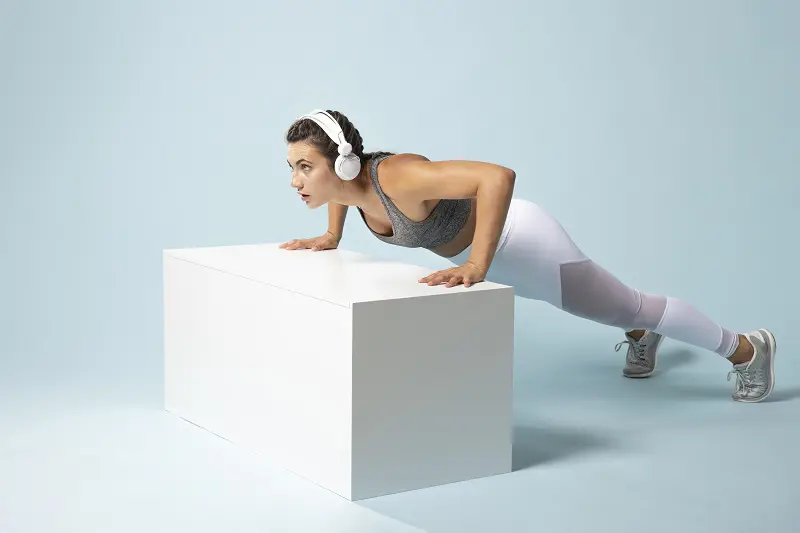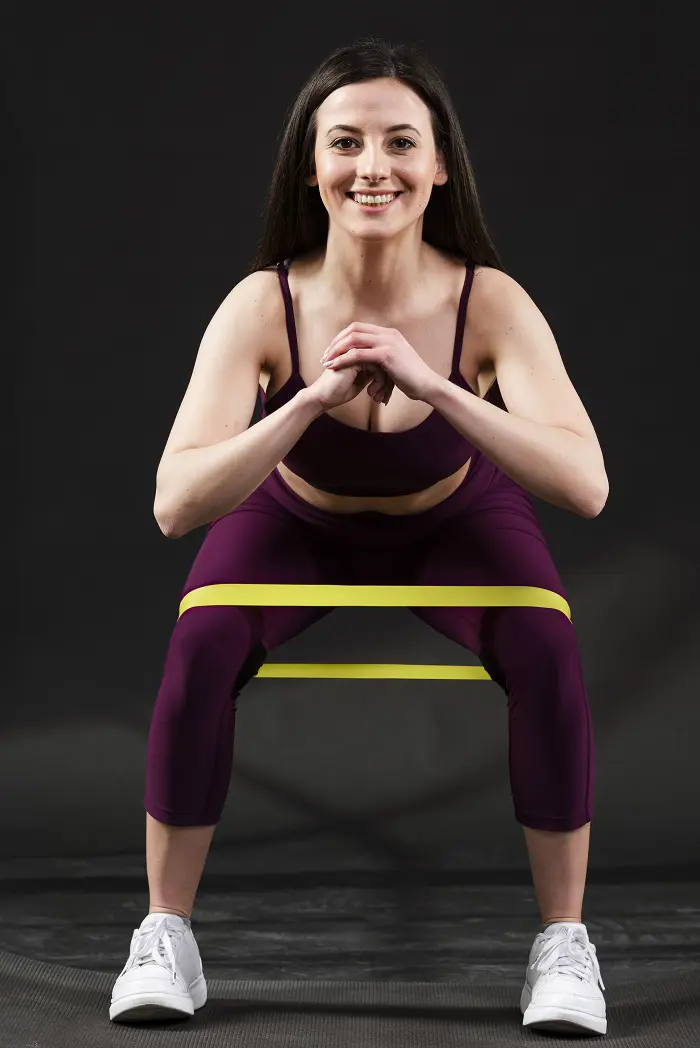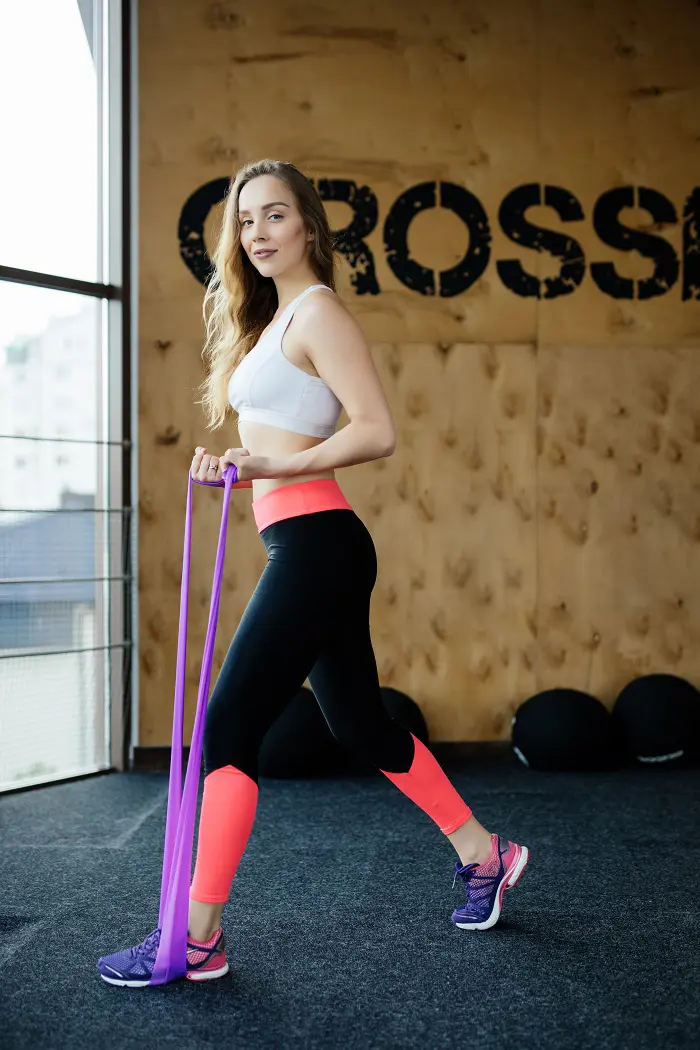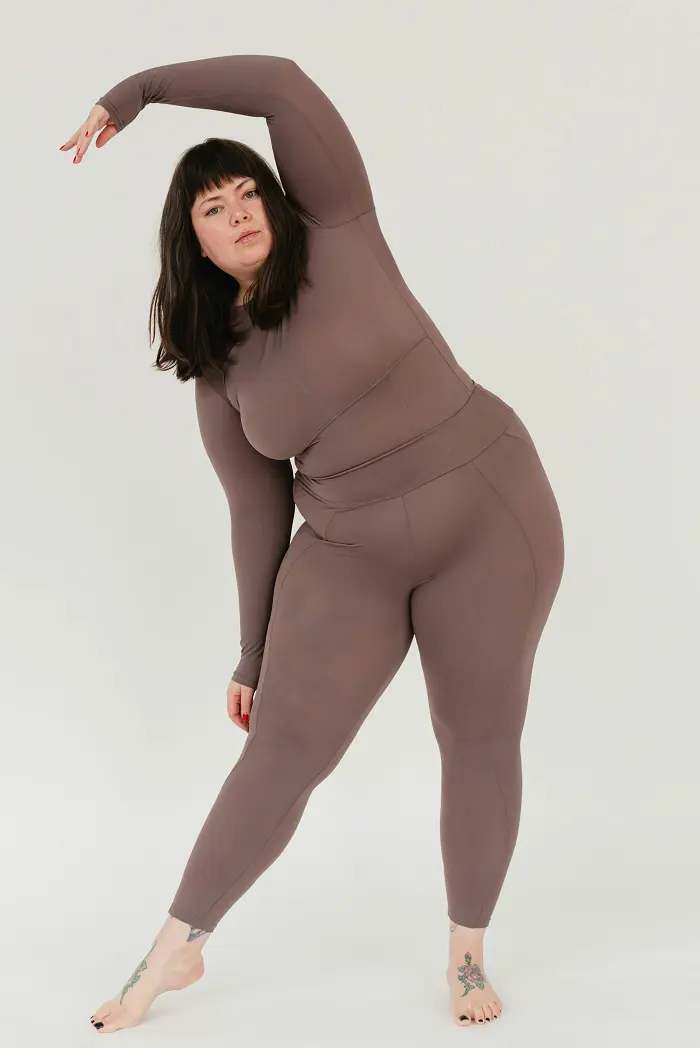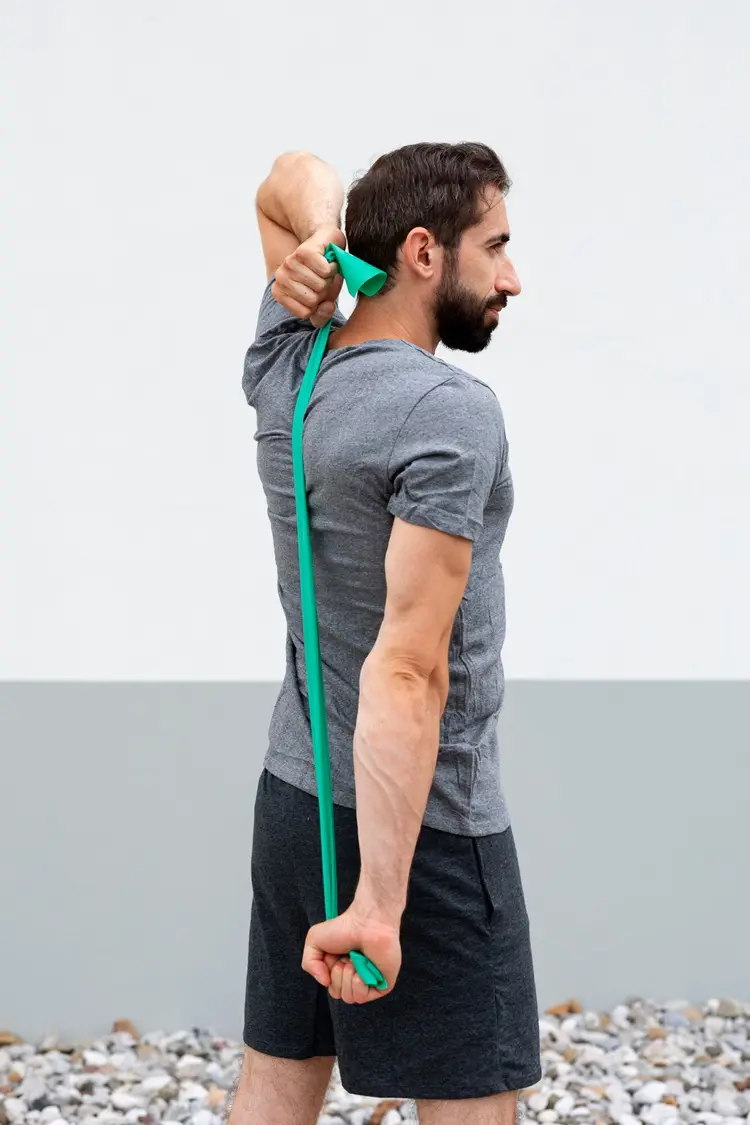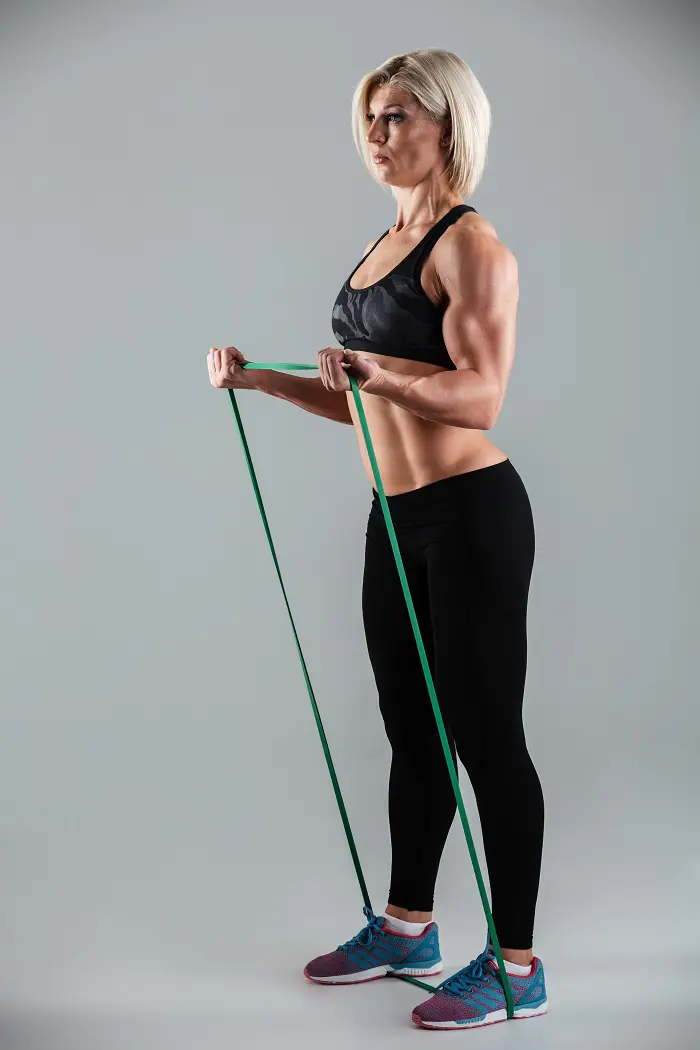10 Arthritis Knee Exercises For Seniors With Pictures
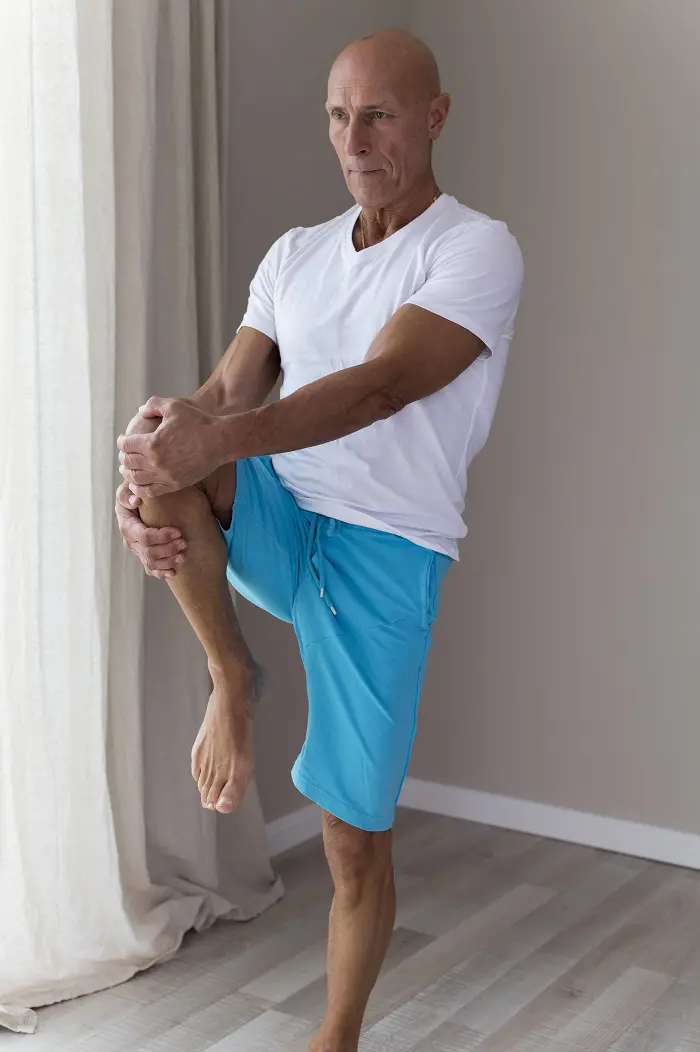
Arthritis in the knee is a common issue among older adults, often leading to discomfort and limited mobility. However, regular exercise can greatly enhance flexibility, reduce pain, and strengthen the muscles around the knees.
Some seniors may face more severe problems, such as a degenerative joint condition called osteoarthritis. So, let's look at the 10 best arthritis knee exercises that can help relieve pain and provide a good knee stretch:
1. Seated Knee Extensions
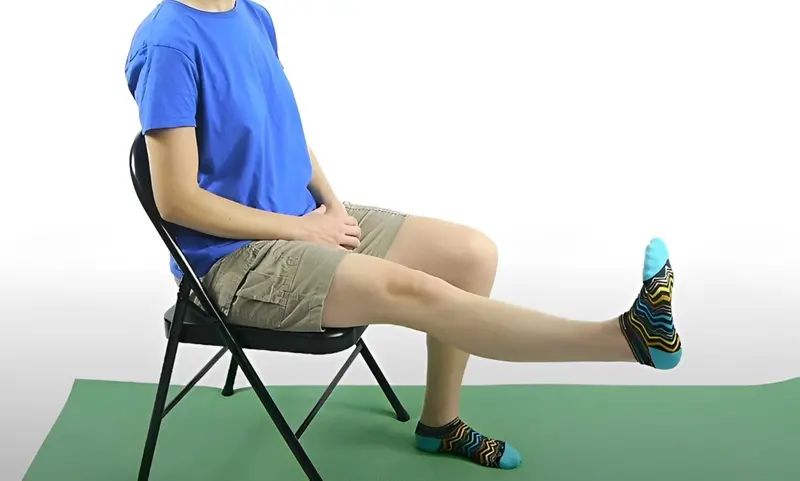
Seniors with arthritis can safely and effectively strengthen their knee muscles with Seated Knee Extensions. This low-impact exercise increases joint mobility without putting excessive pressure on the knees.
It's the perfect lower body stretch for beginners and can be done anywhere, making it a reliable option for reducing arthritis pain.
How To Do It:
- Place both feet flat on the floor and sit in a comfortable chair.
- Position your hands on the front of the chair or thighs for support.
- Raise one leg slowly and extend it fully in front of you.
- Pause for a moment while maintaining a flexed foot to activate the muscles.
- Bring your leg back down to the starting position with control.
- Now, repeat the action with the opposite leg.
- Perform the desired number of repetitions steadily.
2. One Leg Balance
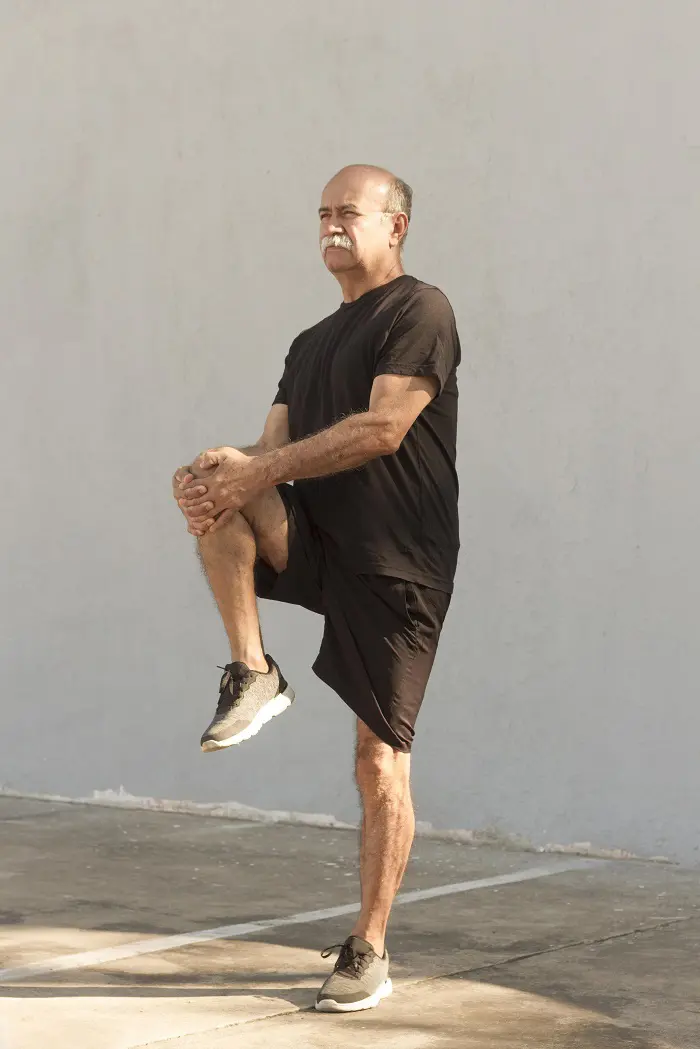
One-Leg Balance is like a game of "who can stay still the longest," making it perfect for improving knee stability and coordination. Engage your core and focus on a fixed spot - this technique works like a secret weapon to help you stay steady.
How To Do It:
- Stand close to a solid object such as a chair or wall (if you need support).
- Lift the other foot in front and shift your weight onto it. Support your knees with your hands if needed.
- Standing with a slightly bent knee will help you stay balanced and reduce strain.
- Hold the position for as long as it feels comfortable (aim for 10 to 20 seconds).
- Move on to the opposite leg after lowering your foot carefully.
- Repeat on both sides and increase the balance time for an extra challenge.
3. Heel Raise
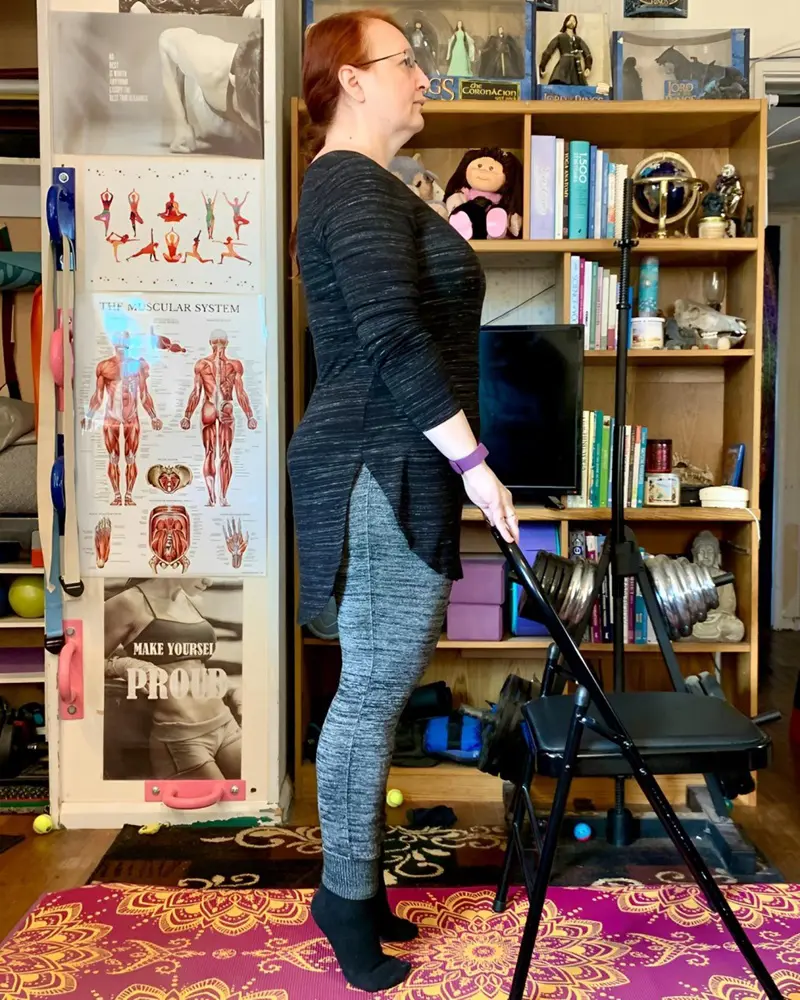
This knee arthritis workout is an easy but powerful way to focus on the calf muscles that are essential for knee support. Calves strengthen the knee joint and lessen its strain by increasing lower leg mobility.
Heel raises also help seniors to perform everyday tasks with ease. Over time, incorporating it into your fitness regimen can help provide relief for managing osteoarthritis in your knees.
How To Do It:
- Rest the hand on a chair or wall while standing up.
- Place your feet hip width apart by maintaining an even distribution of your weight.
- Gradually raise your heels off the floor, standing only on toes.
- Take a pause at the top and feel the calves contract.
- Return to the starting position by lowering your heels.
- Repeat the process 15 to 20 times.
- Aim for 2 to 3 sets and take breaks when necessary.
4. Ball Squeeze
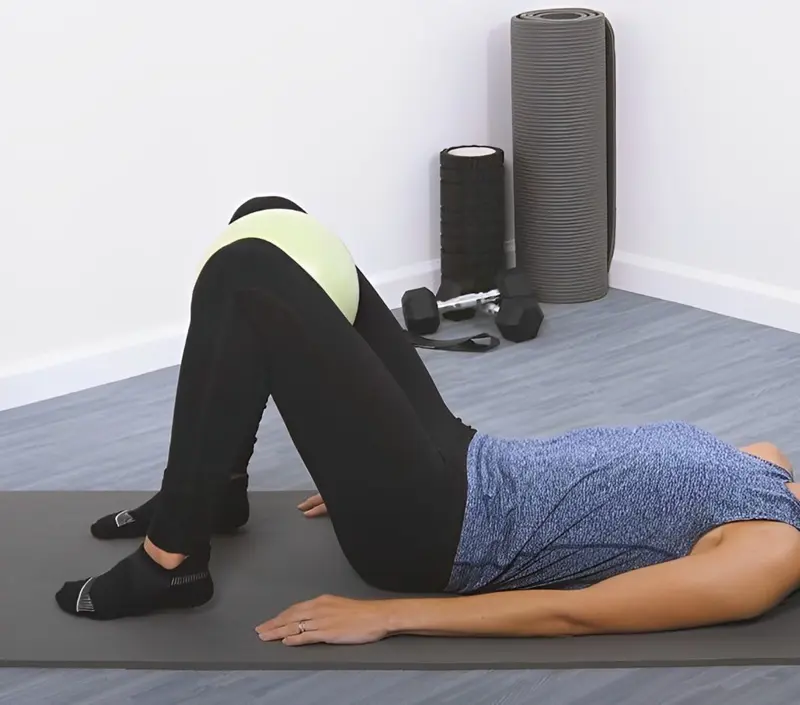
Do you have a ball lying around at home? You can now use it as workout equipment to help manage arthritis in the knee. The Ball Squeeze exercise targets your knee as you press against it. You can do it anytime - while watching TV or chatting with friends.
Seniors should opt for a firm yet flexible ball to prevent overstretching the knees. Comfort is key, so let the ball work its wonders gently!
How To Do It:
- Lie down on your back on a comfortable surface (such as a bed or yoga mat).
- Bend both knees and maintain your feet hip-width apart.
- Place a soft ball between your knees (slightly above the joint).
- Squeeze the ball by pressing your knees together with controlled motion.
- Feel the inner thigh muscles contract as you hold the pressure for a little while.
- Lean back slightly with your knees and allow the ball to lower a bit.
- Make sure your movements are steady and fluid as you repeat the workout 10 to 12 times.
5. Quad Set
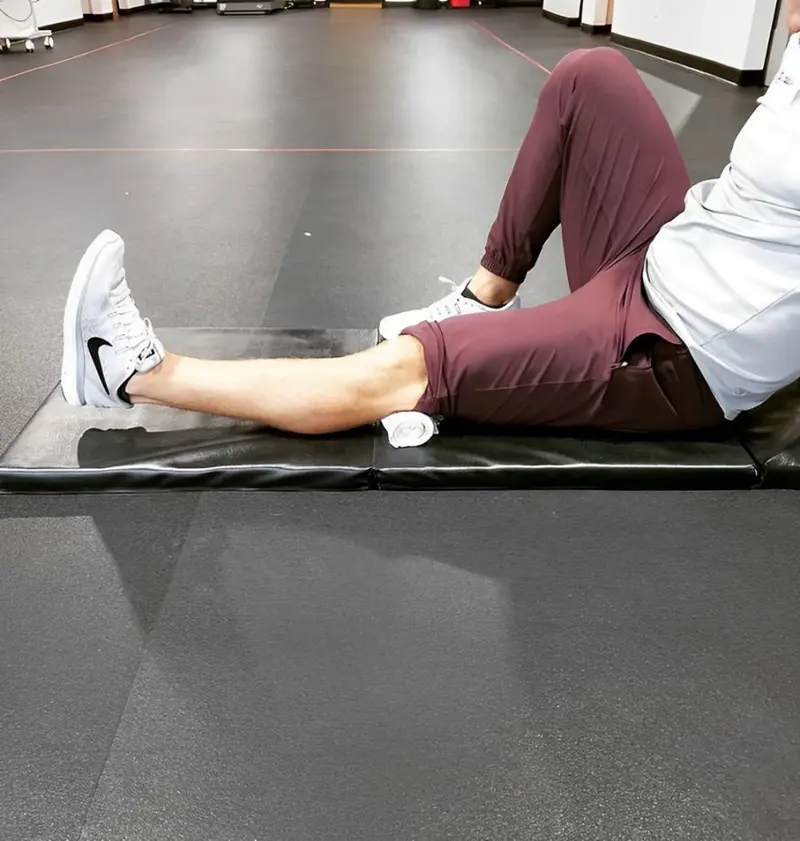
Have you ever wondered how to wake up your sleepy knee muscles with minimal effort? The answer lies in a Quad Set. This knee arthritis exercise is perfect for elderly people who want to strengthen their knees without putting unnecessary strain on their joints.
Squeezing the muscles on top of your thigh can also provide essential support to ease knee arthritis issues. Additionally, this workout does not require costly equipment to practice.
How To Do It:
- First, lie on your back and outstretch your legs.
- Put a towel under the affected knee for support.
- Press the back of your knee toward the floor and tighten the muscle at the top of your thigh.
- Hold the squeeze for 5 to 10 seconds.
- Complete 10 to 15 repetitions and switch to the other leg.
- Take breaks when needed to maintain form and avoid strain.
6. Ankle Pumps
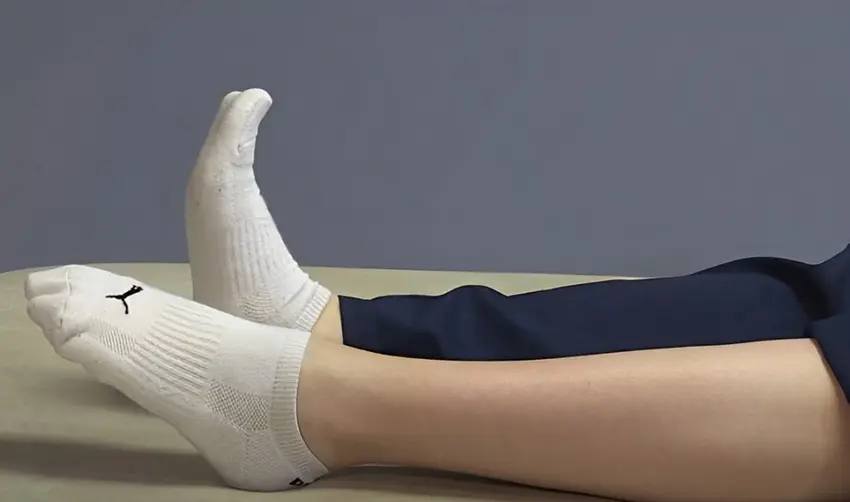
Ankle pumps, also known as "dorsiflexion", are simple and enjoyable stretches that may help ease an arthrtic knee pain. Imagine flexing and pointing your feet back and forth to give them a tiny "wake-up call".
They are often used in rehabilitation to maintain movement even when the body is at rest.
How To Do It:
- Begin by lying down on your back with your legs stretched forward.
- Then, point your left leg's toes down. Pull your toes back up slowly by stretching the top of your foot toward your shin.
- Continue this process for the right leg's toes as well.
- Perform 6 to 10 repetitions per foot.
- Do the exercise 2 to 3 times a day to achieve the best result.
7. Seated Ankle Rotation
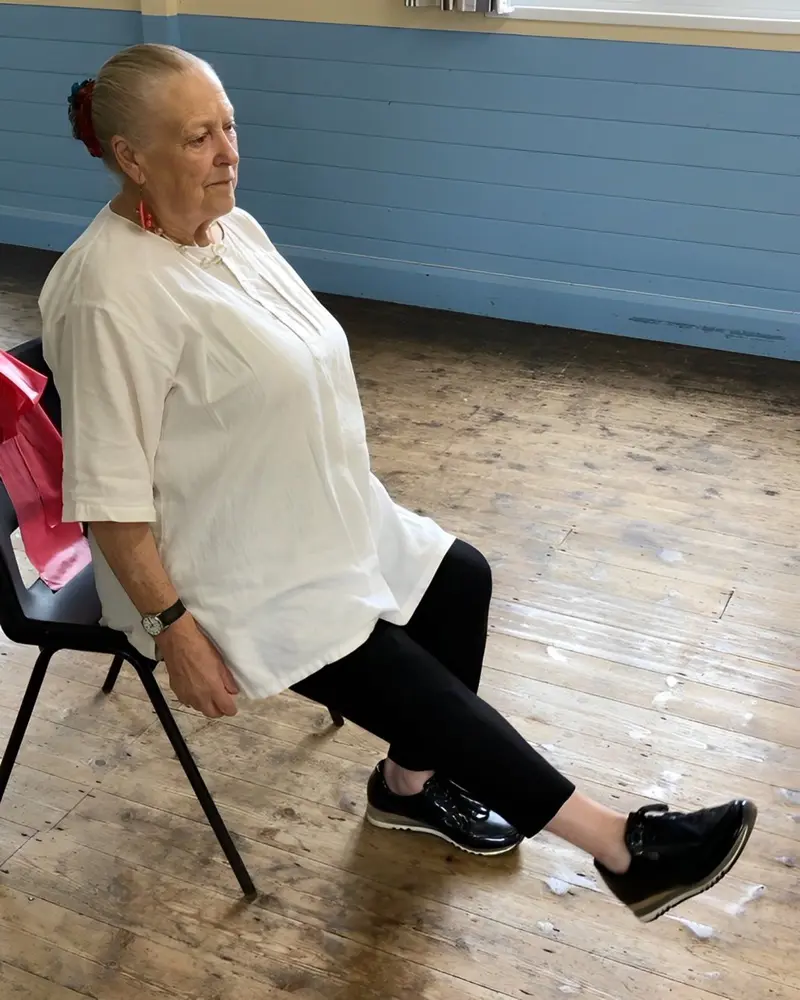
This is yet another efficient exercise for seniors who suffer from knee arthritis. Rotating your ankles in circular motions while being seated can increase joint flexibility and mobility.
It also relieves stiffness and improves comfort by increasing blood flow to the ankles and lower legs. Seated ankle rotations can be performed at any time to alleviate arthritis symptoms and keep the body active.
How To Do It:
- Take a comfortable seat in a chair with your back straight.
- Raise one foot off the ground by maintaining a steady stance.
- Make 5 to 10 circular rotations of your ankle in a single direction.
- Now, perform the ankle rotations in the opposite direction for same number of reps.
- Make sure the circles are complete, and then, repeat the process with the other foot.
- Progressively execute 3 to 4 sets by expanding the range of motion.
8. Leg Raises
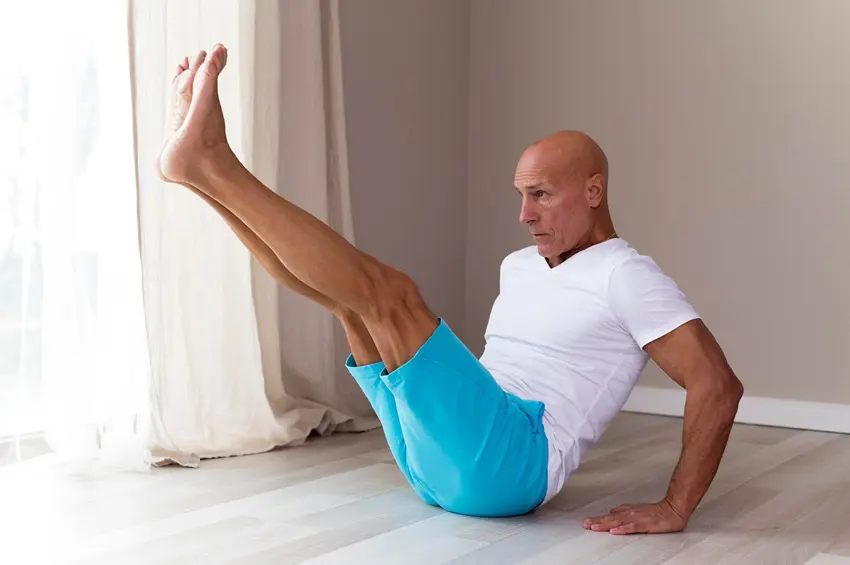
It is an excellent exercise for knee pain to test your strength and enhance the stability of your knees. The main aim of this workout is to activate your thigh muscles without bending the knee and lifting both legs upward.
Your legs will get stronger with each repetition, improving your control. Also, it's a simple exercise that can be performed while reading a book or listening to songs.
How To Do It:
- Lie flat on your back and keep the legs fully extended in front of you.
- Slightly lift your upper body and rest the hands on your sides.
- Elevate both legs off the ground by contracting the thigh muscles.
- Hold for a few seconds at the top of the movement.
- Return your leg to the ground slowly.
- Practice this workout 10 to 15 times by focusing on the proper form.
9. Knee Marching
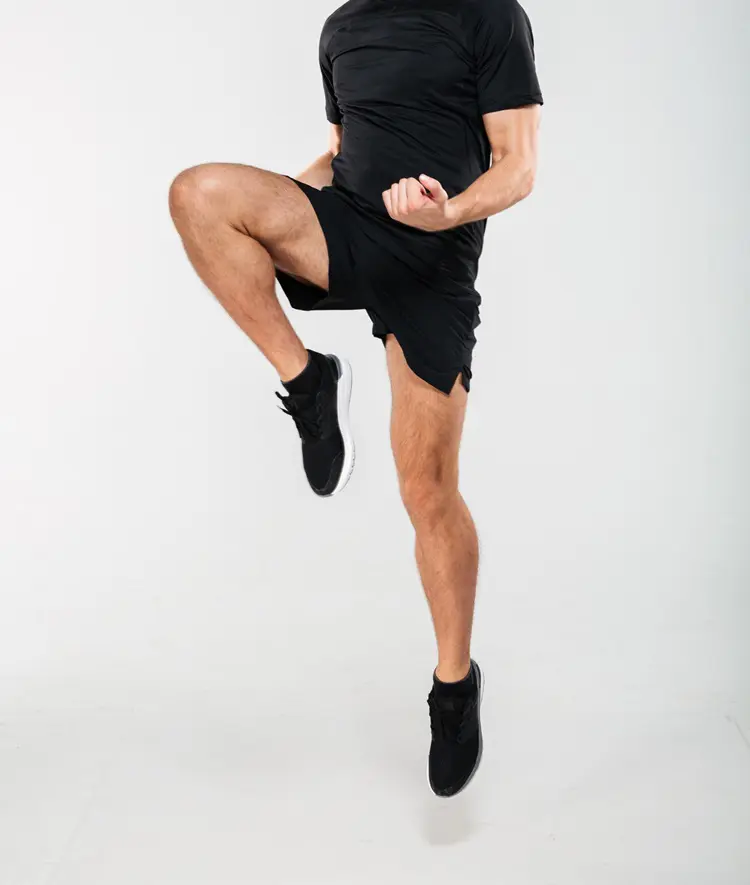
They are a fun leg workout that eases arthritis pain with every repetition. Lifting each knee strengthens the muscles surrounding your knees and engages your thighs.
Consider it a mini march, where each step increases your range of motion, making your legs feel stronger and more agile. So, keep marching and let your knees follow the rhythm!
How To Do It:
- Stand tall by maintaining an upright posture.
- Engage the core and lift the right leg toward your chest with a controlled momentum.
- Then, slowly lower the raised leg back down.
- Now, raise the left leg toward your chest, lower it, and then repeat with your right leg.
- Aim for 10 to 15 repetitions for each leg.
- Continue for two or three sets.
10. Sit And Stand
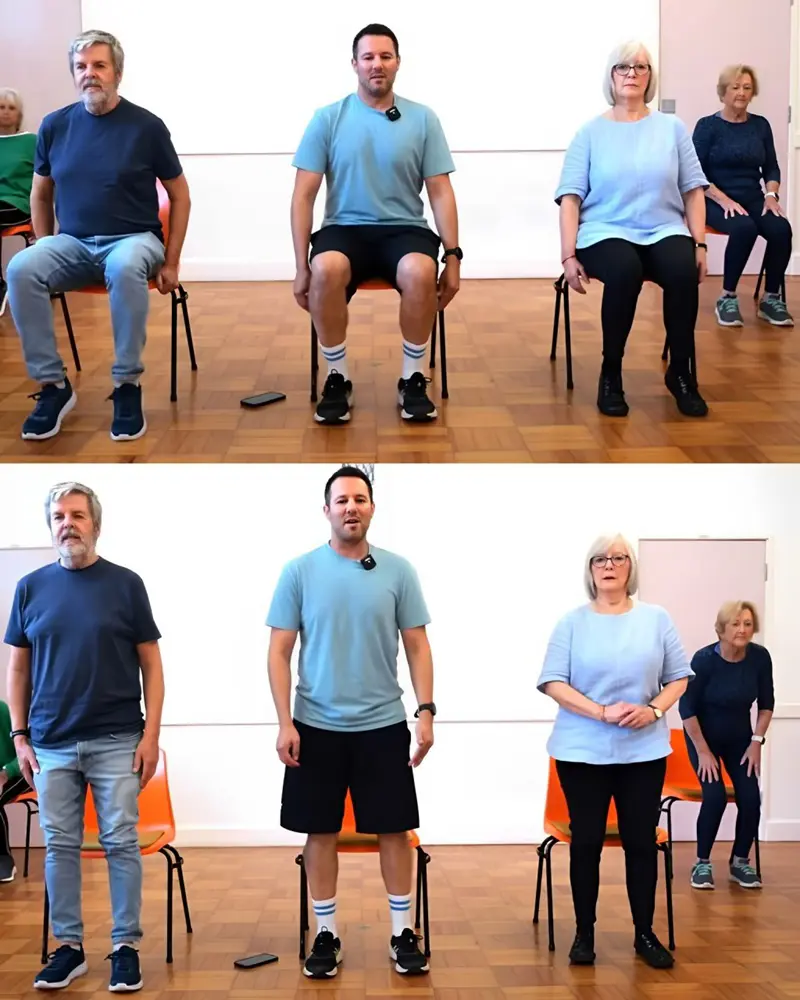
Sit-and-stand is one of the simplest arthritic knees exercises that strengthens and stabilizes the knee and quad muscles. As the name suggests, it just features a senior sitting and standing to get some good muscle engagement. However, this exercise should be avoided if you have severe ankle or knee pain.
How To Do It:
- Sit on a comfortable chair with feet firmly planted on the floor.
- Put your hands on your knees or the armrests (if you need more support).
- Then, push through your heels to stand up.
- Make sure to maintain an upright posture while standing tall.
- Slowly lower yourself back down carefully.
- Repeat the process 6 to 8 times, paying special attention to gentle movements.
How Long To Do Exercises For Knee Arthritis?
Seniors with knee arthritis should start slowly and gradually increase the intensity. For instance, each exercise should be done 3 to 4 times a week for about 10-12 minutes. Begin with a light warm-up, like mild jumping jacks or gentle walking, to get the joints ready. This helps prepare the knee muscles for exercise.
Try to aim for 2 to 3 sets of 10 to 12 repetitions with resistance exercises (like heel lifts or seated leg extensions). Stretching exercises such as quad sets or ankle pumps can assist in maintaining the flexibility and mobility of the legs.
For the alternate movement workouts, practice 3 to 4 times on each side after holding the stretch for 10 to 15 seconds for the best results. Also remember, the stretches should be performed carefully to relieve muscle tension and prevent injuries.
Safety Tips And Precautions
For elderly individuals, safety should always be a major concern when performing exercises for knee arthritis. Extra precautions must be taken to avoid overstretching or injury.
Here are some important safety tips to keep the workouts safe and protect your joint health:
1. Start Slow
When a senior is practicing knee exercises, it's important to start slowly. Start with low-impact exercises to protect the joint from strain. Progressively increase the intensity as the body gets used to the exercise.
It also gives you time to learn how your body responds to each activity and make appropriate modifications.
2. Warm Up And Cool Down
Every exercise should start with a warm-up and end with a cool-down. A proper warm-up reduces the risk of tendonitis by loosening the muscles and joints for high-impact workouts.
Gentle leg stretches or a few minutes of light walking will be enough for a warm-up. Cooling down after an exercise also relaxes the muscles and maintains the heart rate. These techniques contribute to sustaining overall joint health and better long-term mobility.
3. Use Support
Seniors should use support when performing the aforementioned exercises to maintain their balance and reduce the risk of falls. Having something to hold onto (like a sturdy chair or wall) helps increase stability during exercises for the legs or knees.
Support items also enable you to focus on your movements without worrying about losing your balance. This small adjustment can help you exercise with more confidence.
4. Focus on Form
It is also important to focus on good form when doing these exercises. Proper alignment and posture during each exercise can maximize its effectiveness.
Pay attention to the body position by keeping your knees in line with your toes during certain exercises. Proper technique helps target the correct muscles and lessens unnecessary strain on your joints.
5. Hydrate Well
Drinking plenty of water during workouts helps keep the muscles and joints in optimal condition. Having enough water in the body aids in faster muscle recovery and prevents cramps and stiffness.
Maintaining good hydration levels every day could help enhance your performance during workout sessions or any other physical activities.
Disclaimer: The details provided in this article are for educational purposes only. It should not be considered as medical or clinical advice.
Recent posts
Exercises
Exercises
10 Trapezius Stretches To Relieve Muscle Stiffness
Responsible for rotating the scapula, the trapezius muscles are triangular in shape and located in the upper back. They also play a role in extending the neck and contribute to arm stability. Since this muscle does a lot of work, it can become stiff ...
Exercises
20 Different Variations Of Push Up For Beginner To Experts
Pushups are commonly practiced for building upper body strength - and for good reason. They could also be the very first workout we ever tried. No expensive equipment is needed, and it can be done from the comfort of our home. If we are getting bored...
Exercises
20 Squat Variations For Every Fitness Level
Squats have been a popular exercise for many fitness enthusiasts. They are effective for strengthening key lower-body muscles like the glutes, hamstrings, quadriceps, and calves. Practicing them daily can lead to a toned butt - an aesthetic goal for ...
Exercises
12 Golfers Elbow Exercises For Quick Pain Relief
Golfer’s elbow, aka medial epicondylitis, happens when the tendons connecting your forearm muscles to the bony inside part of your elbow get inflamed. This can cause pain and throw off your physical well-being. To tackle this, there are plenty ...
Exercises
11 Exercises To Gain Weight For Bulking Up At Home
Bulking up at home is possible with the correct exercises and a well-structured diet. You do not need any fancy equipment or a complex setup to perform these workouts. Focusing on compound movements and gradually increasing intensity will maximize yo...
Exercises
12 Serratus Anterior Exercises For Better Shoulder Health
The serratus anterior, aka the boxer muscles, plays a key role in shoulder stability and range of motion. Strengthening this muscle not only enhances mobility but also helps prevent injuries and improve posture. Including targeted workouts in your fi...

